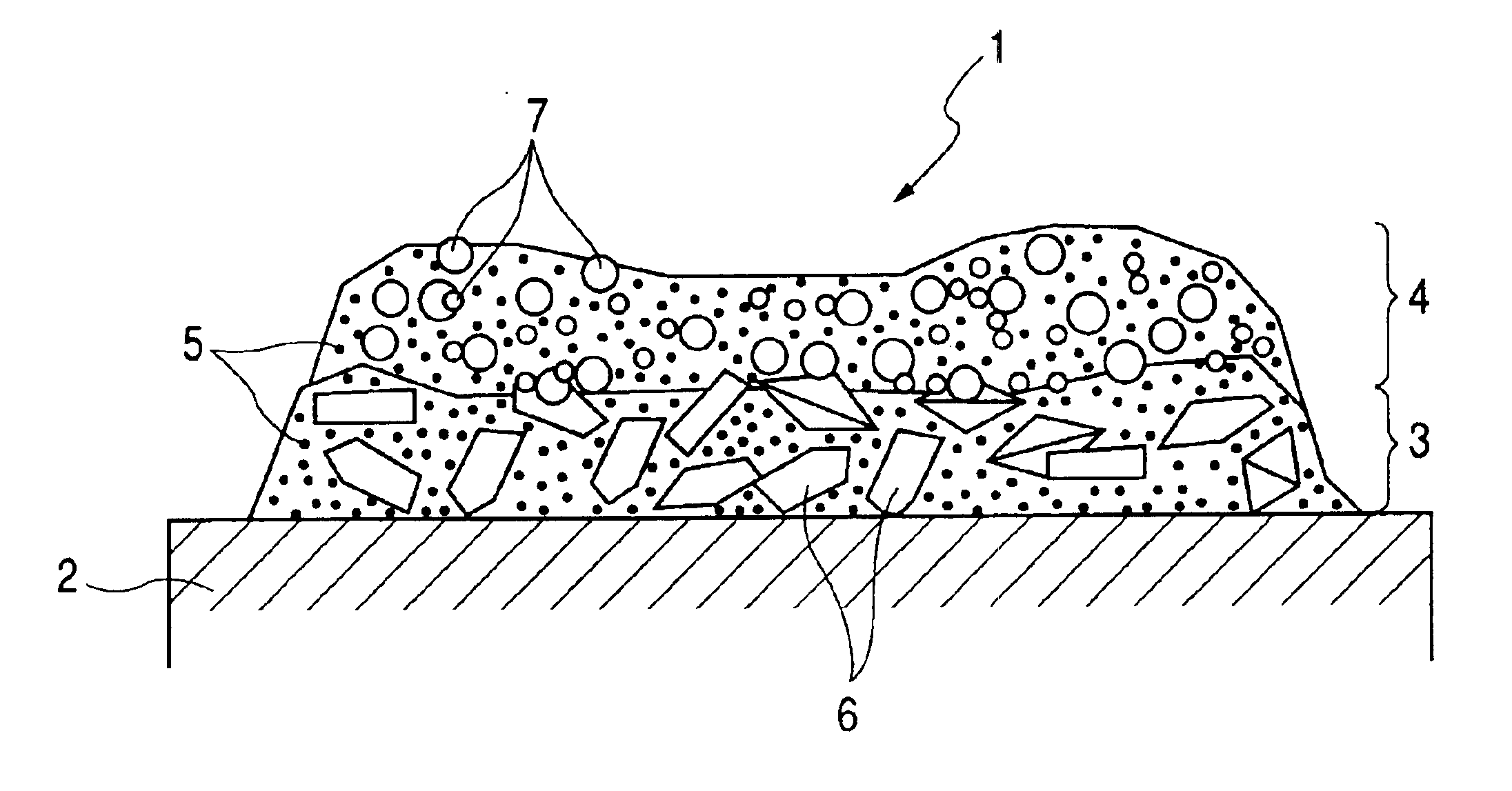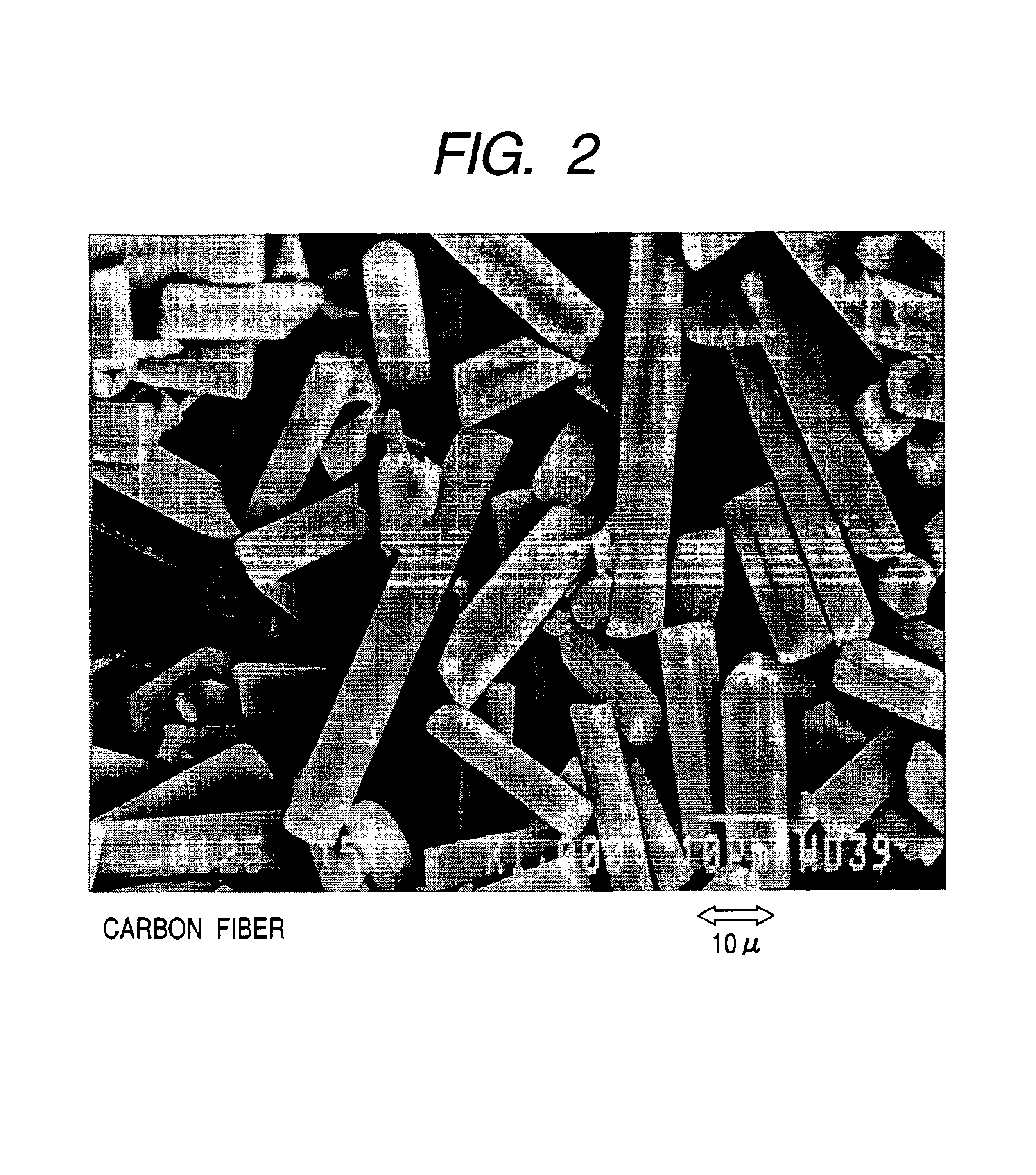Variable-resistance element
a resistance element and variable technology, applied in the direction of resistor details, resistor manufacturing, resistors with sliding contact, etc., can solve the problems of high wear resistance and longer operating life, poor microlinearity, and the surface of resistors that require, so as to prolong the sliding lifetime of the resistor as a whole, the effect of easy planarization
- Summary
- Abstract
- Description
- Claims
- Application Information
AI Technical Summary
Benefits of technology
Problems solved by technology
Method used
Image
Examples
example
Example 1
[0053]The first resistor paste and the second resistor paste were prepared according to the compositions shown in Tables 1 and 2 below.
[0054]
TABLE 1First Resistor PasteParticleComponentMaterialWeight [g]size [μm]BinderPhenolic resin387—resinConductiveCarbon black930.04material(acetylene black)FirstPulverized carbon1263reinforcingfibersmaterial 6SolventCarbitol394—
[0055]
TABLE 2Second Resistor PasteParticleComponentMaterialWeight [g]size [μm]BinderPhenolic resin433—resinConductiveCarbon black730.04material(acetylene black)SecondThermal black810.35reinforcingmaterial 7SolventCarbitol413—
[0056]The first resistor paste for forming the first resistive layer 3 was applied, by printing using a screen of an appropriate mesh, on an epoxy glass insulating substrate 2 having silver electrodes preliminarily formed thereon. The applied paste was dried to form the first resistive layer 3. The second resistor paste for forming the second resistive layer 4 was then applied on the first resi...
example 2
[0059]A resistor of Example 2 was prepared as in Example 1 except that the thermal black (average particle size: 0.35 μm) used as the second reinforcing material 7 of the second resistor paste shown in Table 2 was replaced with 81 grams of carbon black having an average particle size of 0.12 μm.
example 3
[0060]A resistor of Example 3 was prepared as in Example 1 except that the thermal black (average particle size: 0.35 μm) used as the second reinforcing material 7 of the second resistor paste shown in Table 2 was replaced with 81 grams of pulverized carbon black having an average particle size of 0.90 μm (measured by laser diffractometry).
PUM
| Property | Measurement | Unit |
|---|---|---|
| particle size | aaaaa | aaaaa |
| particle size | aaaaa | aaaaa |
| particle size | aaaaa | aaaaa |
Abstract
Description
Claims
Application Information
 Login to View More
Login to View More - R&D
- Intellectual Property
- Life Sciences
- Materials
- Tech Scout
- Unparalleled Data Quality
- Higher Quality Content
- 60% Fewer Hallucinations
Browse by: Latest US Patents, China's latest patents, Technical Efficacy Thesaurus, Application Domain, Technology Topic, Popular Technical Reports.
© 2025 PatSnap. All rights reserved.Legal|Privacy policy|Modern Slavery Act Transparency Statement|Sitemap|About US| Contact US: help@patsnap.com



